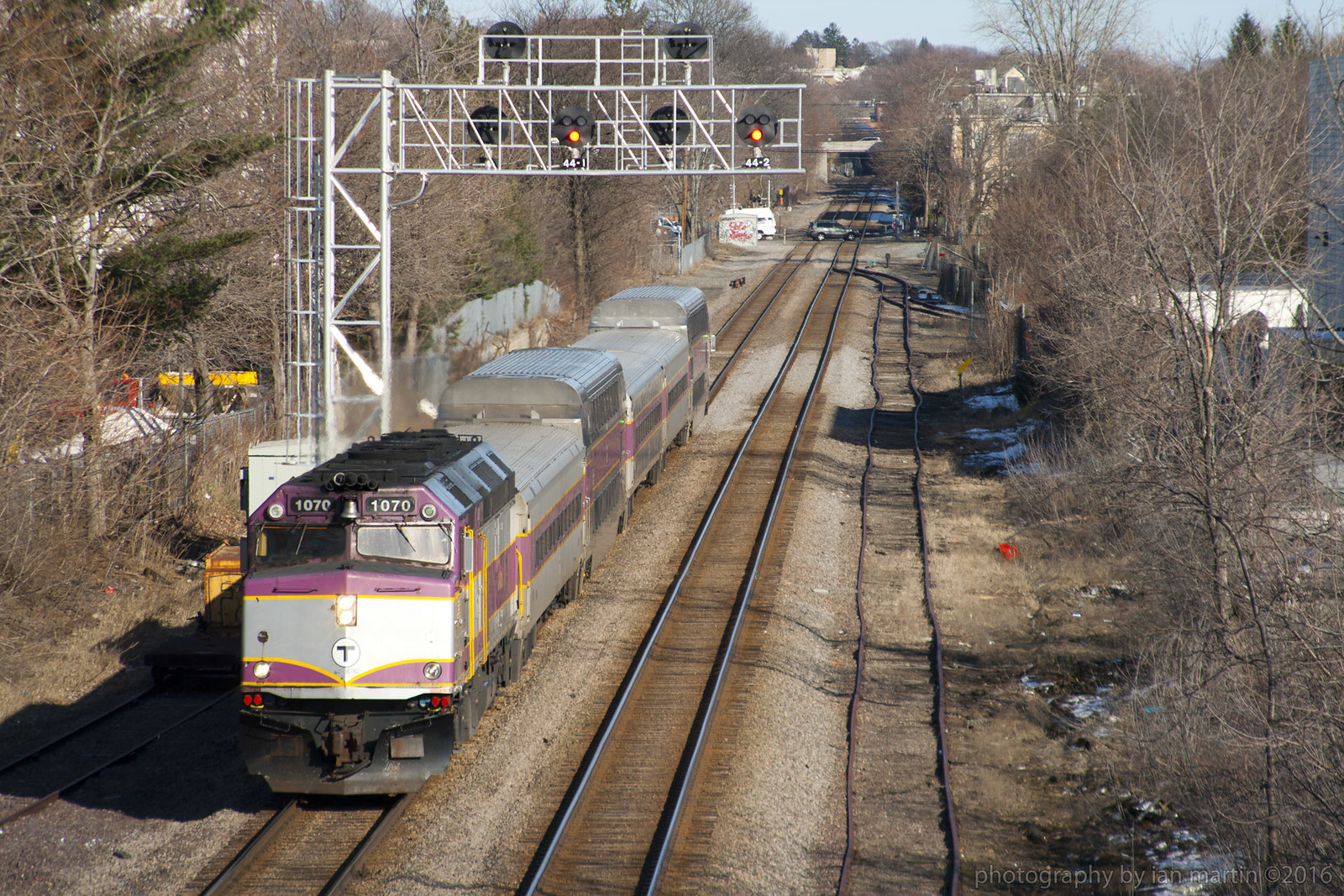Canadian National / Canadian Pacific
The CROR signal ruleset is perhaps the more strict when it comes to offset head placement as it is the only option to designate a signal as automatic as number plates can also appear on absolute signals (on absolute signals plates are used to denote the lever number). On single head signals left hand placement is used to provide the distinction in addition to absolute signals always having two or more heads.Unfortunately, as far as I can tell this policy does not apply to CN and CP's United States operations, although some vestiges exist like these somewhat modern unilens signals on the former D&H.
Flordia East Coast
Regional operators often become museums of signaling practice and in this regard the FEC has preserved the practice of offset head placement. The FEC also uses a robust cab signaling system so this is even more interesting single they could probably eliminate waysides entirely if they wanted to.Former Boston and Maine (Guilford Rail System / MBTA)
Public transport agencies are another place where traditional signaling practices can live on and combined with a regional freight operator we have the former Boston and Main system as our final holdout on the use of offset signal heads. Some of the newer heads are a bit less offset than others, but it's clearly still a thing.Well that's all the ones I am aware of at this point. There are probably others (I'm omitting the Reading and Northern cause that's somewhat of a special case). Please let me know if you know of any that I have missed.




From what I have seen the Canadian Roads have number plates on block signals, but not interlocking signals. In CTC the absolute controlled signals at a control point are considered block signals, not interlocking signals. I believe with the extension of CTC and elimination of branch lines there are a lot more block signals and fewer interlocking signals
ReplyDeleteThe former DRGW used number plates on all block signals including "absolute" signals at CTC control points. DRGW called "absolute/stop and stay" block signals Positive signals. Positive Signals were distinguished by a marker plate with a reflectorized letter P. The ATSF also had signals with "P plates" but in that case they were permissive or grade signals; proceed at restricted speed without stopping.
The CNW, until it adopted the 1967 Consolidated Code of Operating Rules, used number plates on all block signals, both absolute stop and stop and proceed. A one arm semaphore arm painted red denoted a stop and proceed signal. A two arm stop and proceed semaphore had a offset lower arm (or light unit). An absolute block signal semaphore arm was painted red with a white stripe. If it had only one arm (or light unit) a red marker sight was placed directly below it. In the
Barriger photos in the St. Louis Mercantile Museum collection there is a photo of the CTC absolute block signal at Dakota Jct. NE. The double arm absolute semaphore governed two routes, one to Caspar, WY, and the other to Rapid City, SD. The mast had two number plates. Apparently one number plate was for the upper semaphore route and the other for the lower.
The Classic Union Pacific used absolute signals for single track ABS. By that I mean not only was the leave siding head block signal absolute but all the other intermediates were also absolute/stop and stay. However, the signal numbers were painted on the signal mast; but, were not considered number plates. This got some tenant line crews in trouble because they assumed the number painted on the mast constituted a number plate. Not so. UP of that era did use horizontally aligned number plates to denote stop and proceed intermediate signals on 251 double track and CTC.
You might want to read Brakeman 136's reply re Canadian signals.
DeleteAll signals on Canadian railways are generally number-plated to identify the location (mileage to the tenth, even-odd directional... so westbound signal at mile 15.5 would be 155, eastbound might be 154, suffixed N or S for north/south or -1 -2 -3 for track 1, 2 or 3) whether they are automatic or absolute.
ReplyDeleteAll two head signals are assumed absolute unless the heads are offset to indicate they are automatic. All single head signals are assumed automatic unless fitted with an "A" plate to indicate absolute. All three head signals are absolute.